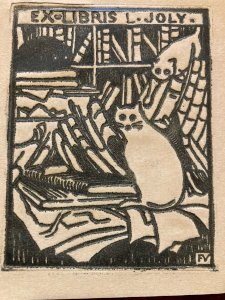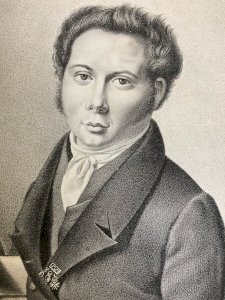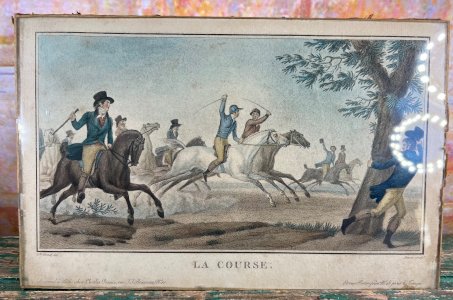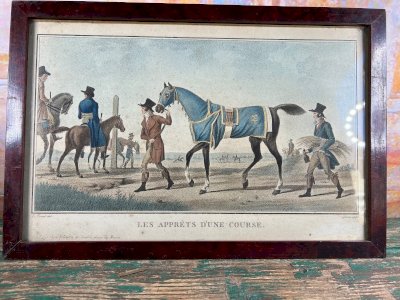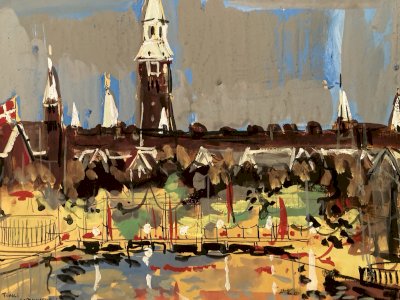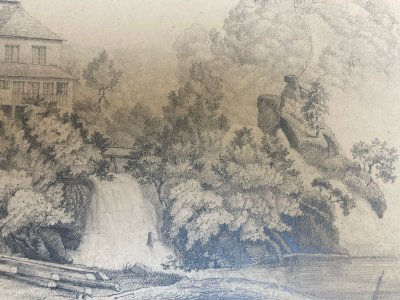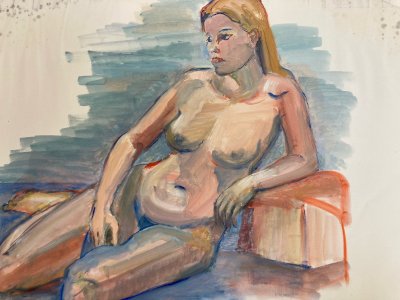- Sell Now
- Home
-
FURNISH
All STORAGE FURNITURE • Wardrobe • Chests of drawers, Chiffonnier • Sideboard • Shelves, Bookshelves • File cabinet • Sewing Furniture • Bar cabinet • TV Stand • Trunk, Chest TABLE & BEDSIDE TABLE • Dinner Table • Coffee table, side table, end table & Bedside • Console, Pedestal table & Selette • Serving Table, Trolley • Card Table • Draper's counter & table SEAT • Sofa • Armchair • Chair • Stool • Bench • Daybed • Beanbag & Footrest • Deckchair & Outdoor DESK, SECRETARY, DRESSING TABLE GARDEN LOUNGE BEDDING • Bed • Bedhead • Cradle, Moses basket CRAFT FURNITURE, WORKSHOP • Workbench • Stool, Ladder, Step • Easel & Trestle SCREEN PIANO
-
DECORATE
All TO PUT • Sculpture, Statuette • Vase & Planter • Dame Jeanne, Bonbonne & Flacon • Bridal globe, Dome • Pin tray, Ashtray • Candlestick & Candle • Photo frame • Stone, Fossil, Mineral • Earth Globe MIRROR WALL DECORATION • Painting • Engraving & Illustration • Poster • Tapestry • Wall Frame • Plate & Sign • Juju Hat & Wall Paniel • Mask • Hunting Trophy • Other object to hang CLOCK, PENDULUM & ALARM CLOCK ARRANGEMENT • Jar, Box & Case • Basket, Wastebasket & Crates • Magazine Rack & Vinyl Holder • Display & Spinner • Coat hook & Coat rack • Furniture Valet & Mannequin • Towel Holder • Suitcase & Travel Bag • Bottle Rack • Umbrella holder BATHROOM OFFICE • Mail holder • Bookends • Sulphide & Paperweight • Stationery FIREPLACE ACCESSORIES HOBBIES • Vintage Sport • Music • Vintage device • Smoking Item • Militaria, Ancient weapon • Miniature Vehicle • Game, Playing Cards • Collection object & Curiosity BIRD CAGE RELIGION, SPIRITUALITY
- TEXTURE
- ILLUMINATE
-
ACCOMODATE
All TABLE & SERVING • Plate • Silverware • Knife Holder • Glass • Bowl, Mug, Cup • Bowl, Ramekin & Cup • Dish, Cup & Salad Bowl • Tray, Basket & Server • Table Mat • Pitcher, Carafe, Bottle, Tea & Coffee Jug • Ice Bucket • Salt & Pepper shakers, Oil & Vinegar shakers • Sugar and jam maker • Gravy boat • Butter dish • Egg cup • Terrine OLD BALANCE CUTTING BOARD GRINDER CASSEROLE, SAUCEPAN & PAN KITCHEN UTENSIL & ACCESSORY
- TINKER
- KIDS
- Jewelry & Accessories
Login
Description
Description of the work Title: Portrait of Charles Leconte de Lisle Artist: Félix Vallotton (signed "FV" at the bottom right) Technique: Wood engraving (xylography) Date: Late 19th century Dimensions: see photo Signature: Initials "FV" in a rectangular cartouche, at the bottom right This striking, minimalist black and white engraving depicts Charles Leconte de Lisle (1818–1894), a Parnassian poet and a major figure in 19th-century French poetry. Vallotton offers a portrait that is both stylized and satirical, characteristic of his engravings of literary or political personalities. The poet’s massive, bald face occupies much of the composition, framed on the right by locks of hair swept back. The slightly cold gaze is enhanced by a perfectly round monocle, which accents both the worldly elegance and the somewhat distant attitude of the subject. The lines are sober, stripped down, but very expressive in their economy of means: each stroke is intentional and contributes to the strength of the character. As in other works of this series, Vallotton strikes a subtle balance between caricature and psychological portraiture, capturing not only the physical features but also a form of intellectual posture. The figure of Leconte de Lisle appears frozen, hieratic, almost sculpted in wood, faithful to the ideal of cold beauty advocated by the Parnassian school. ⸻ Context and series This engraving is part of a series of portraits of notable figures from the late 19th century created by Félix Vallotton for illustrated press or as independent plates. These portraits are often associated with political, literary, or revolutionary figures (such as Bakunin or Louise Michel) and reveal Vallotton's interest in expressive physiognomy and critical representations of notoriety. Biography of Félix Vallotton (1865–1925) Félix Vallotton was a Swiss painter, engraver, illustrator, and writer, naturalized French in 1900. Born in Lausanne, he moved to Paris in his youth, where he trained at the Beaux-Arts. From the 1890s, he distinguished himself with innovative wood engravings, influenced by Japanese prints and marked by a refined aesthetic, a dramatic use of black and white, and sometimes an ironic perspective on society. Close to the Nabis movement, he interacted with Bonnard, Vuillard, and Denis. Vallotton developed a diverse body of work: engravings, illustrations for the press, paintings of intimate scenes, landscapes, portraits, and nudes, often imbued with a distanced realism. He also authored several novels and critical writings. Félix Vallotton died in Paris in 1925. He is now recognized as one of the major artists of the late 19th and early 20th centuries, particularly for profoundly renewing the art of engraving. Type: Print Medium: On paper Theme: Portrait, Self-portrait
Réf :
#337228
Related Products
Comments
19th Century Engraving Wood Félix VALLOTTON Portrait Charles Leconte de Lisle Ancient Art
290€
31500 Toulouse
Ce site contient des liens d’affiliation pour lesquels je peux recevoir une compensation.
Description
Description of the work Title: Portrait of Charles Leconte de Lisle Artist: Félix Vallotton (signed "FV" at the bottom right) Technique: Wood engraving (xylography) Date: Late 19th century Dimensions: see photo Signature: Initials "FV" in a rectangular cartouche, at the bottom right This striking, minimalist black and white engraving depicts Charles Leconte de Lisle (1818–1894), a Parnassian poet and a major figure in 19th-century French poetry. Vallotton offers a portrait that is both stylized and satirical, characteristic of his engravings of literary or political personalities. The poet’s massive, bald face occupies much of the composition, framed on the right by locks of hair swept back. The slightly cold gaze is enhanced by a perfectly round monocle, which accents both the worldly elegance and the somewhat distant attitude of the subject. The lines are sober, stripped down, but very expressive in their economy of means: each stroke is intentional and contributes to the strength of the character. As in other works of this series, Vallotton strikes a subtle balance between caricature and psychological portraiture, capturing not only the physical features but also a form of intellectual posture. The figure of Leconte de Lisle appears frozen, hieratic, almost sculpted in wood, faithful to the ideal of cold beauty advocated by the Parnassian school. ⸻ Context and series This engraving is part of a series of portraits of notable figures from the late 19th century created by Félix Vallotton for illustrated press or as independent plates. These portraits are often associated with political, literary, or revolutionary figures (such as Bakunin or Louise Michel) and reveal Vallotton's interest in expressive physiognomy and critical representations of notoriety. Biography of Félix Vallotton (1865–1925) Félix Vallotton was a Swiss painter, engraver, illustrator, and writer, naturalized French in 1900. Born in Lausanne, he moved to Paris in his youth, where he trained at the Beaux-Arts. From the 1890s, he distinguished himself with innovative wood engravings, influenced by Japanese prints and marked by a refined aesthetic, a dramatic use of black and white, and sometimes an ironic perspective on society. Close to the Nabis movement, he interacted with Bonnard, Vuillard, and Denis. Vallotton developed a diverse body of work: engravings, illustrations for the press, paintings of intimate scenes, landscapes, portraits, and nudes, often imbued with a distanced realism. He also authored several novels and critical writings. Félix Vallotton died in Paris in 1925. He is now recognized as one of the major artists of the late 19th and early 20th centuries, particularly for profoundly renewing the art of engraving. Type: Print Medium: On paper Theme: Portrait, Self-portrait
Réf :
#337228
 English
English  Français
Français 









